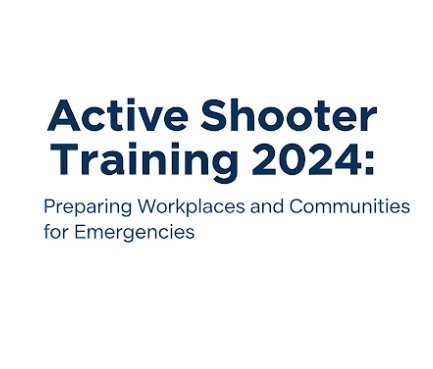In recent years, organizations across the United States and worldwide have recognized the importance of active shooter preparedness training. Unfortunately, incidents of workplace violence and mass shootings continue to rise, making safety training a non-negotiable element of organizational risk management.
As we step into 2024, active shooter training programs have evolved significantly. They no longer focus solely on reaction, but also on prevention, preparedness, and recovery. This article explores the latest updates in active shooter training, its importance, and how organizations can implement effective programs.
Why Active Shooter Training Matters in 2024
- Rising Incidents: Statistics show that active shooter events are happening more frequently, often in workplaces, schools, and public spaces.
- Legal & Compliance Pressures: Employers have a responsibility under OSHA to provide a safe work environment, which includes preparedness for violent incidents.
- Employee Peace of Mind: Training equips staff with practical strategies and reduces fear, helping them feel safer at work.
Key Components of Active Shooter Training in 2024
1. Situational Awareness
Employees are trained to notice warning signs, such as behavioral changes, threats, or suspicious activities. Early detection can prevent escalation.
2. Run, Hide, Fight Framework
The Department of Homeland Security’s widely adopted guidance remains central:
- Run: Evacuate safely if possible.
- Hide: Lock down and remain quiet if escape isn’t an option.
- Fight: As a last resort, use available means to incapacitate the attacker.
3. Technology Integration
- Mass notification systems, panic apps, and AI-powered surveillance are now part of many training scenarios.
- Real-time alerts can significantly reduce response times for law enforcement.
4. Customized Workplace Scenarios
Modern training is tailored to specific industries—healthcare facilities, retail, corporate offices, and educational institutions each face unique risks.
5. Trauma-Informed Response & Recovery
Beyond the immediate threat, 2024 training emphasizes mental health support and post-incident recovery to reduce long-term trauma among survivors
New Trends in Active Shooter Training 2024
- Virtual Reality (VR) Drills: Simulated environments provide realistic practice without the risks of live drills.
- Blended Learning: Online modules combined with in-person exercises allow flexible and scalable training.
- Cross-Agency Collaboration: Police, fire departments, and medical responders are increasingly involved in organizational drills.
- Community Preparedness Programs: Many cities now offer free or subsidized training to schools, local businesses, and faith-based organizations.
Best Practices for Organizations
- Conduct Risk Assessments – Identify vulnerabilities in facilities and workflows.
- Develop Clear Policies – Ensure staff knows how to respond, report threats, and access resources.
- Train Regularly – One-time sessions are not enough; reinforcement and refreshers are crucial.
- Integrate Mental Health Programs – Encourage early reporting of concerning behavior and provide support systems.
- Partner with Experts – Certified trainers and law enforcement professionals can deliver tailored and effective programs.

